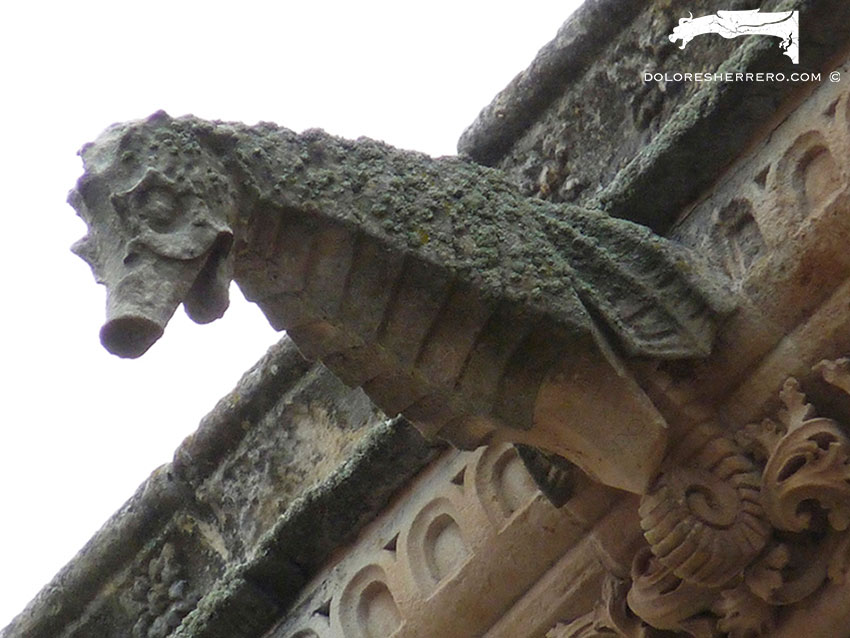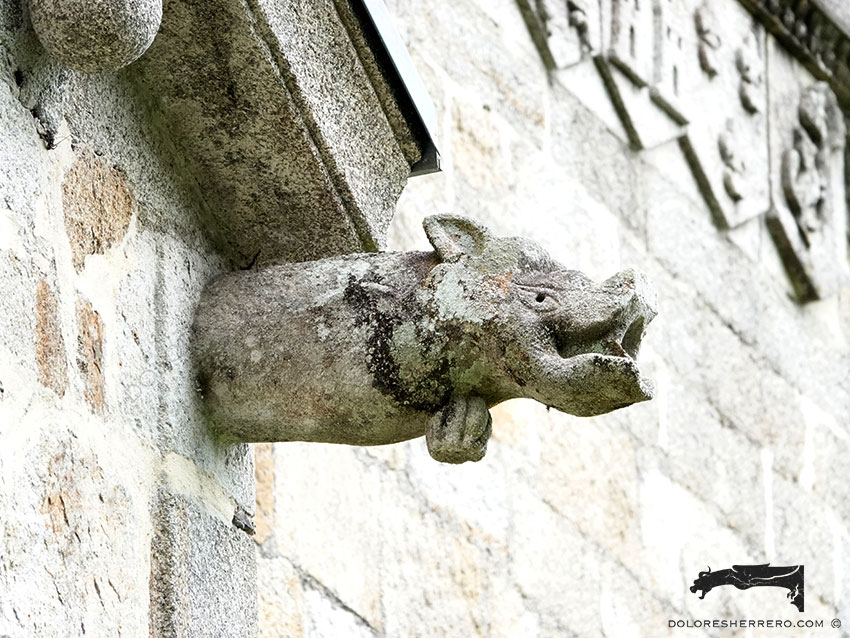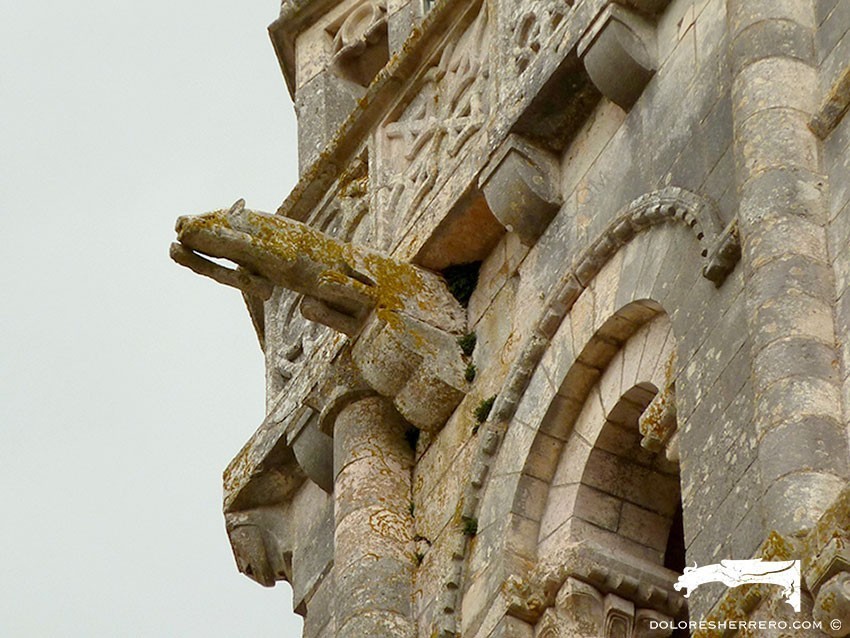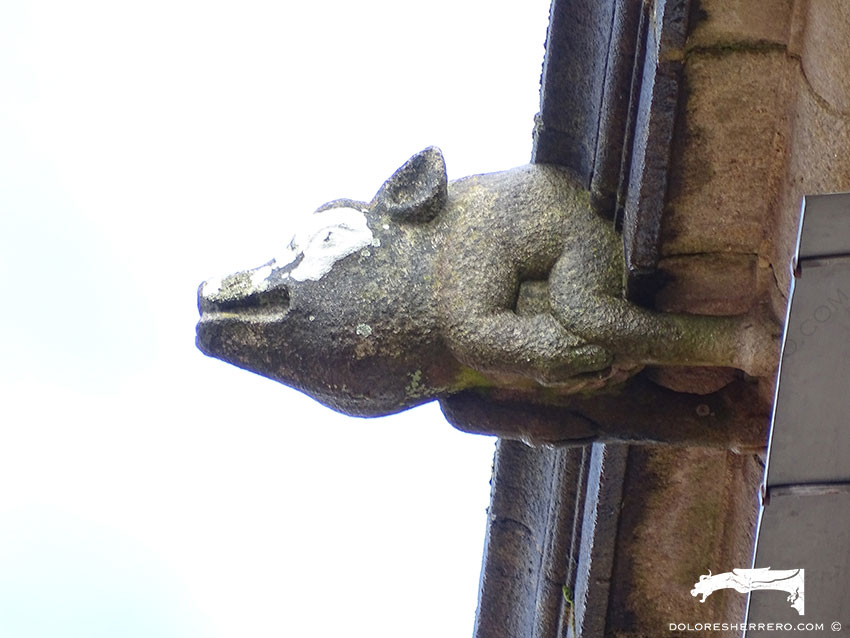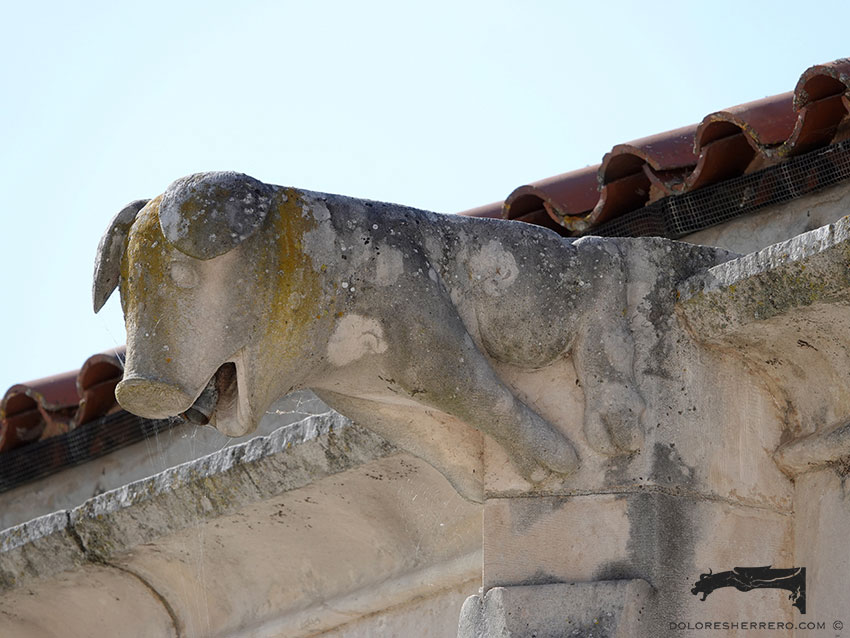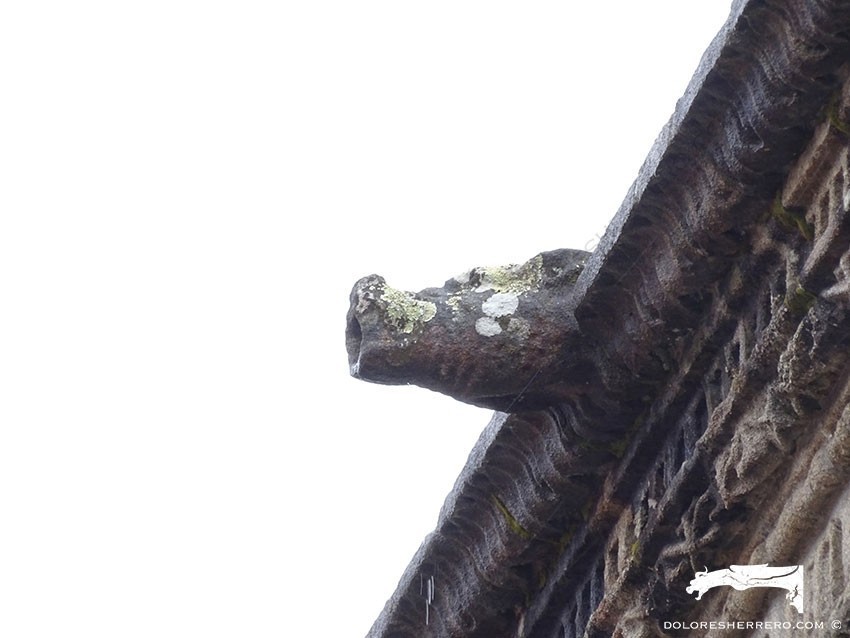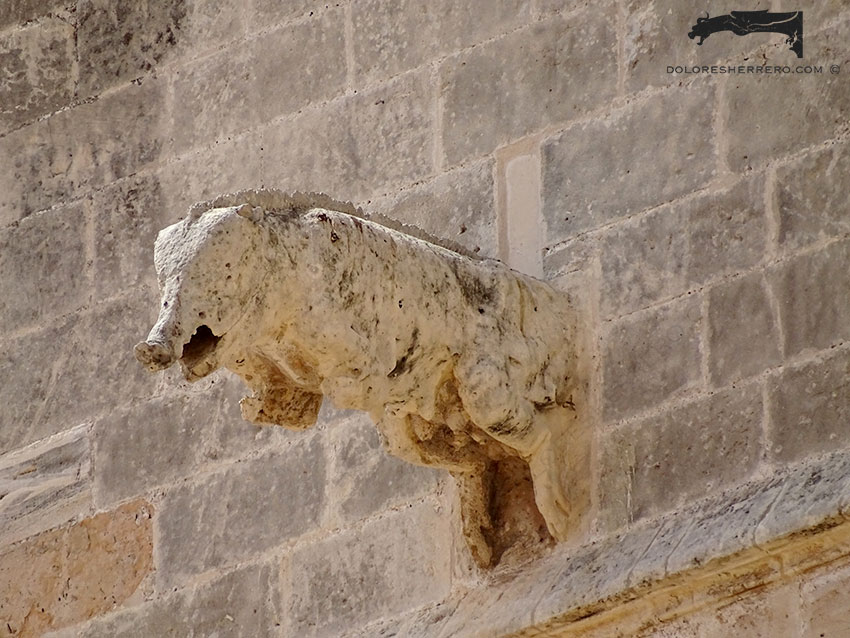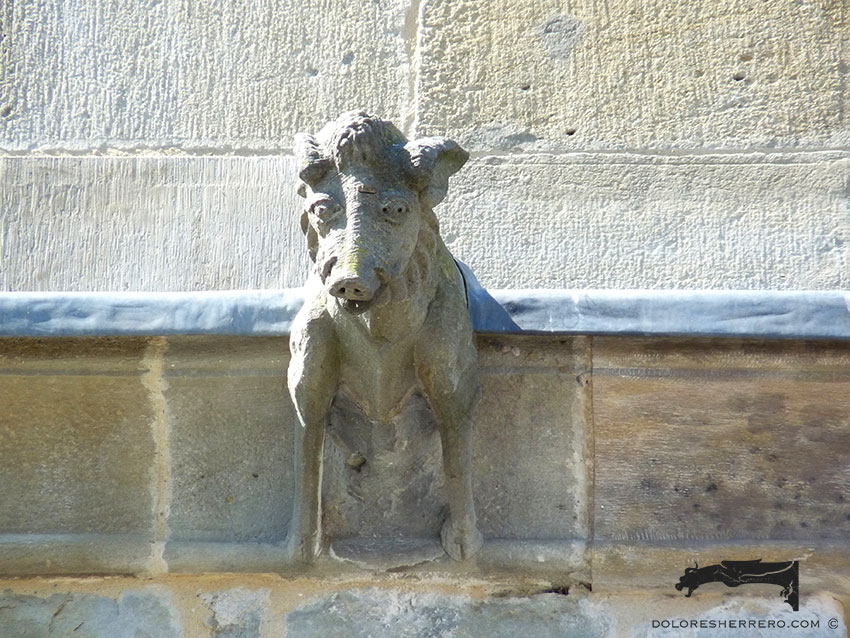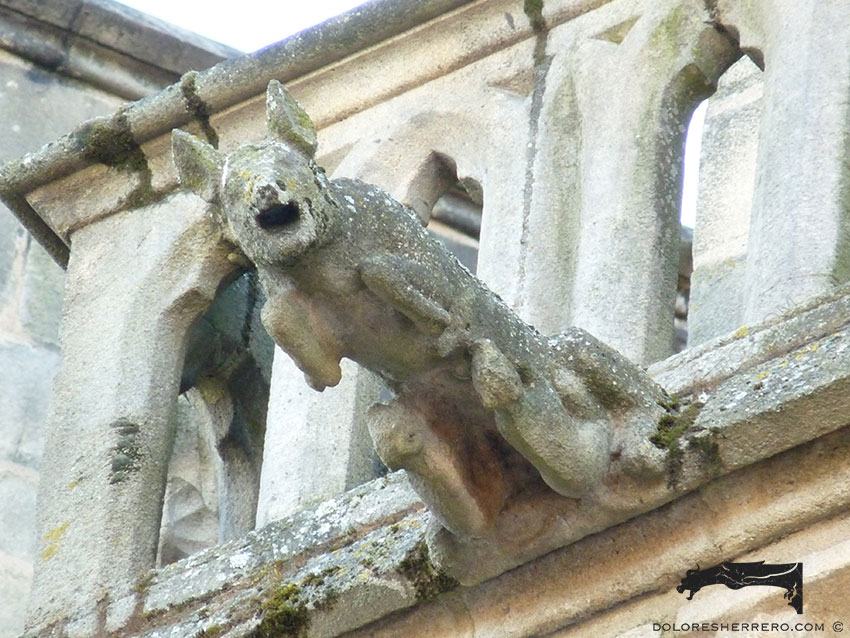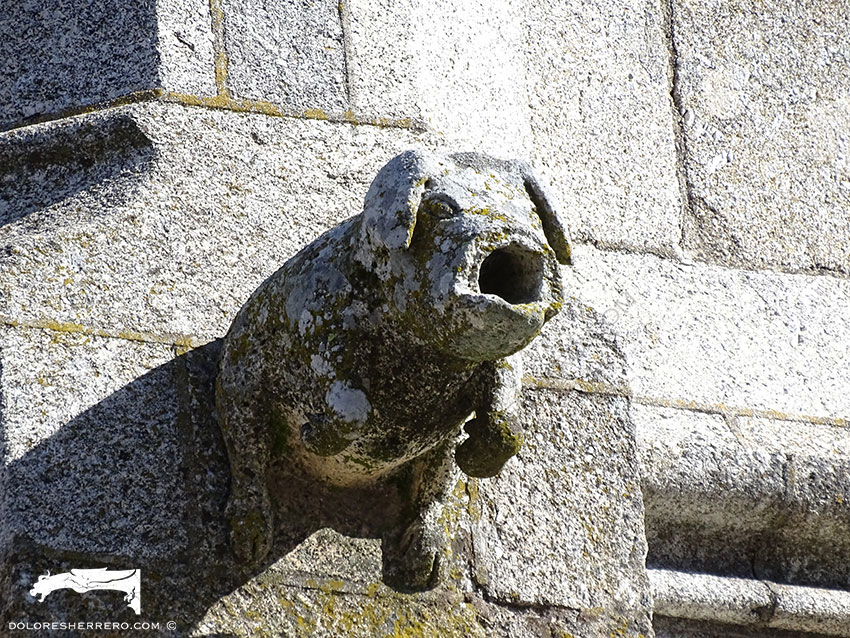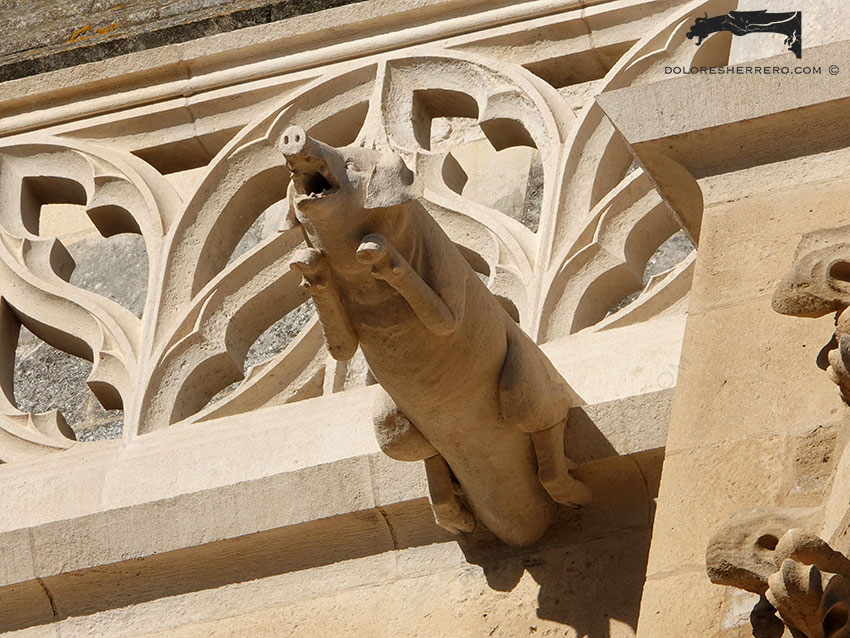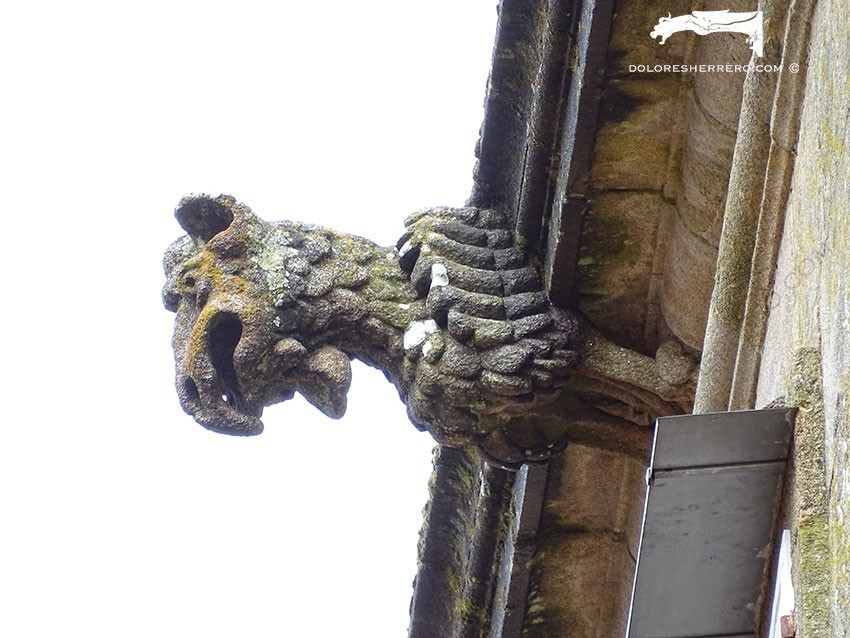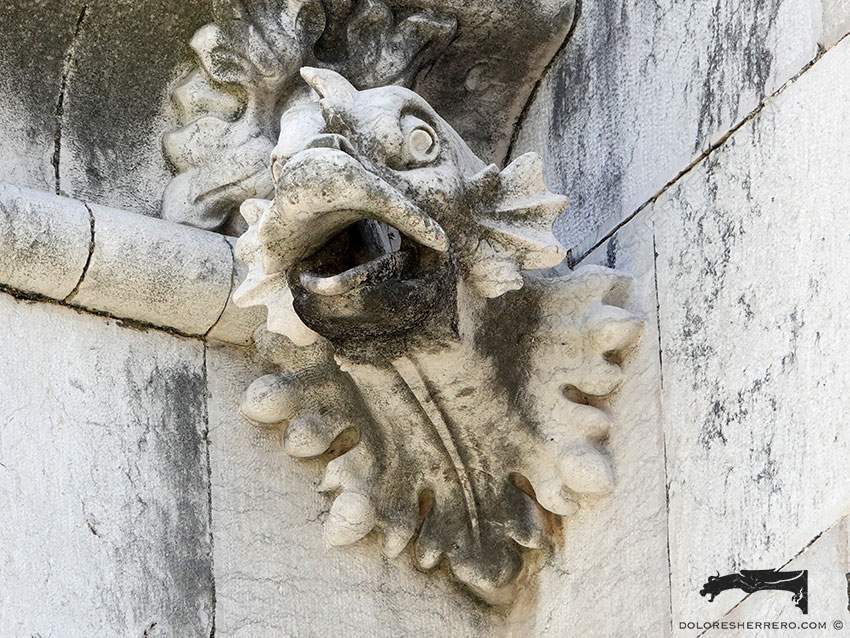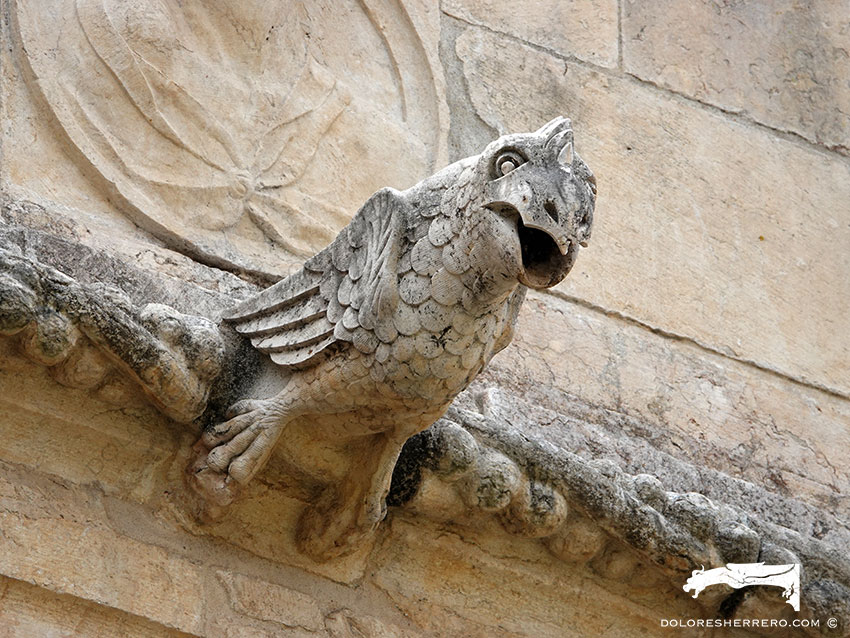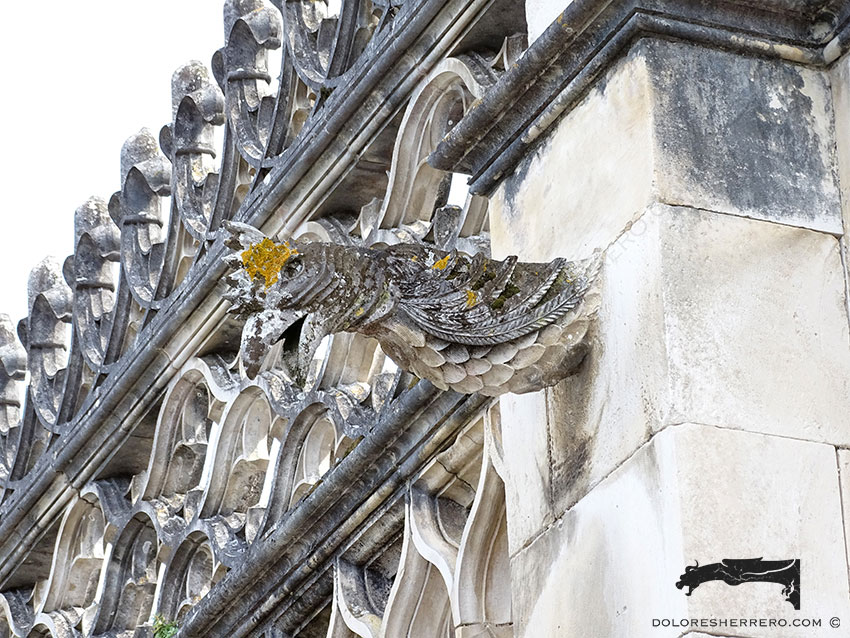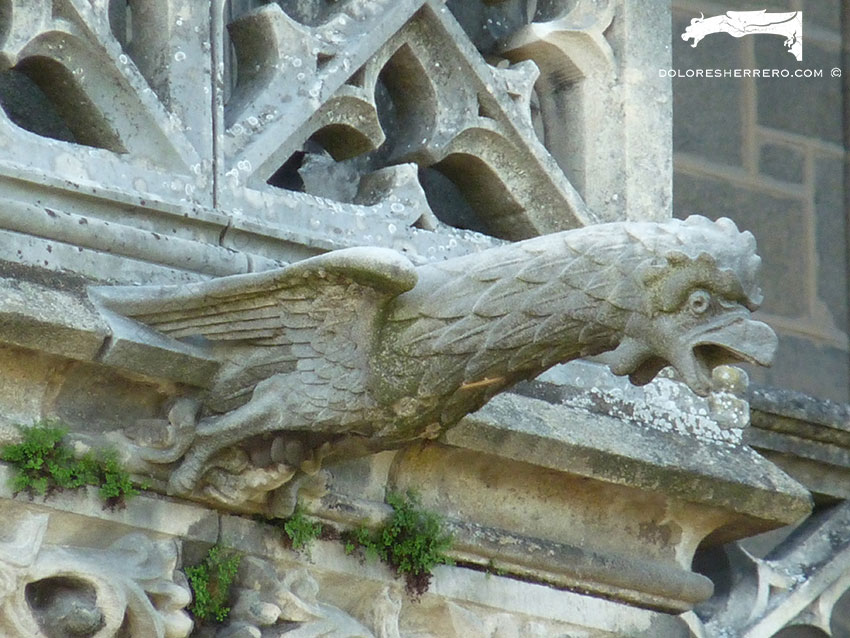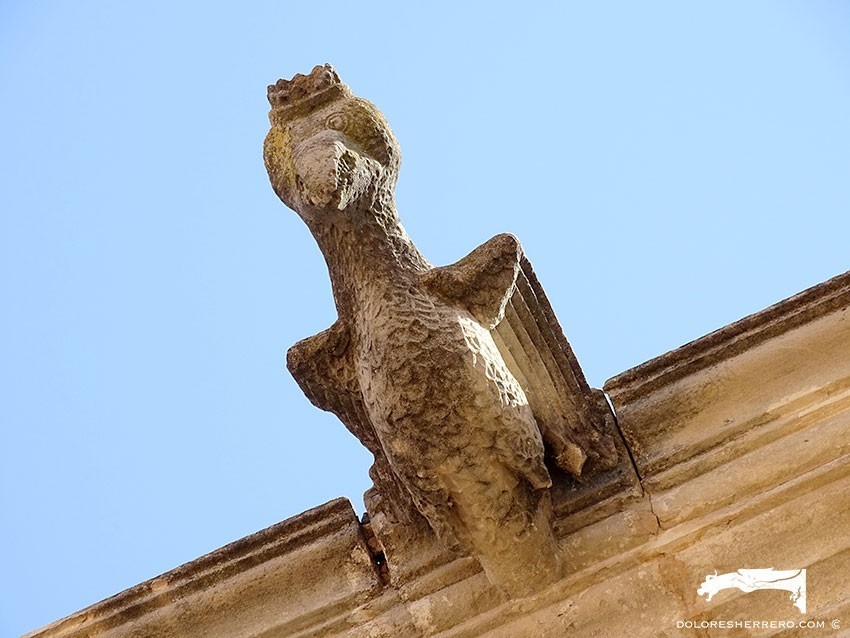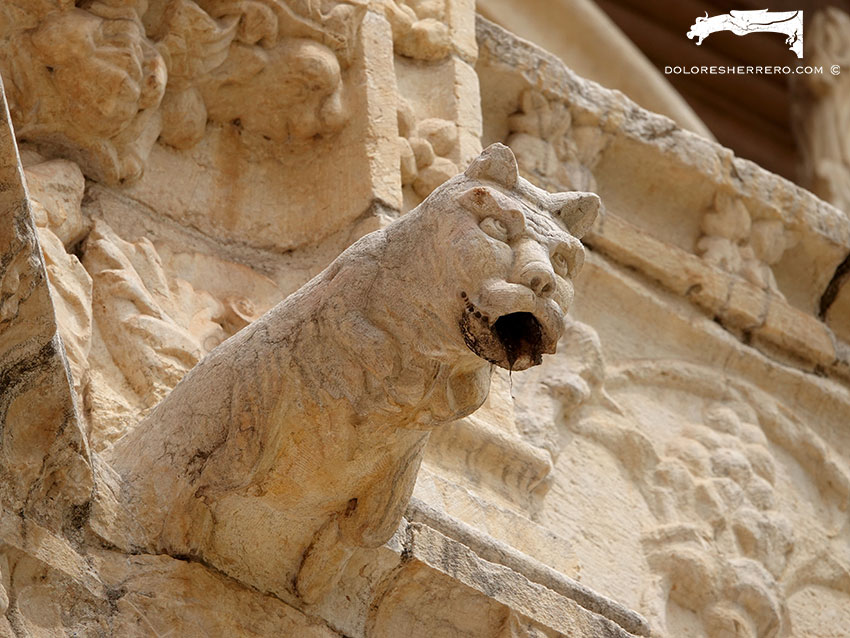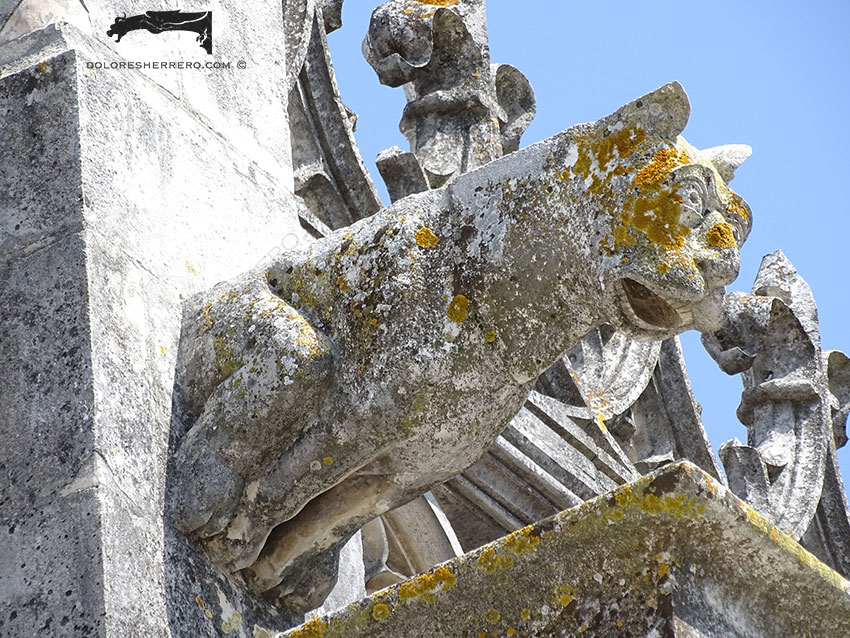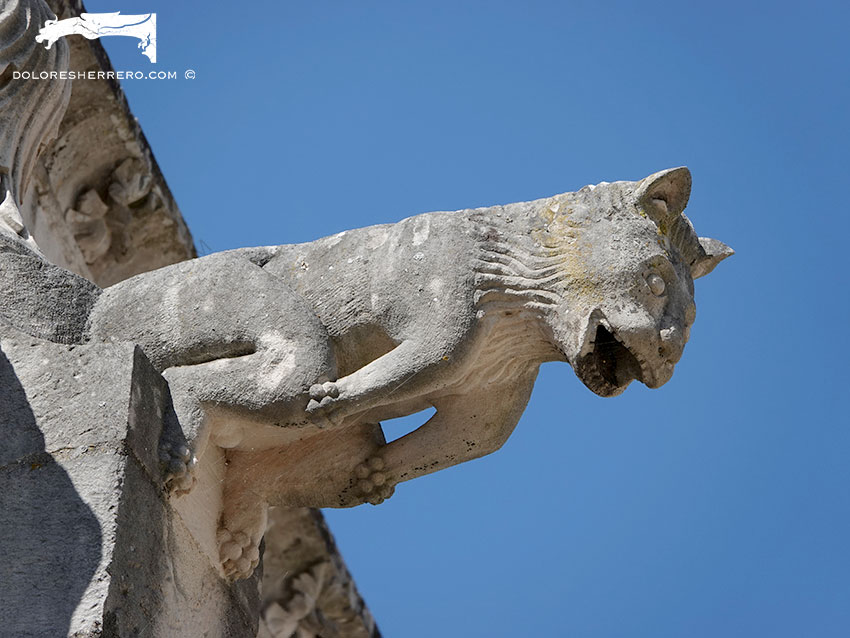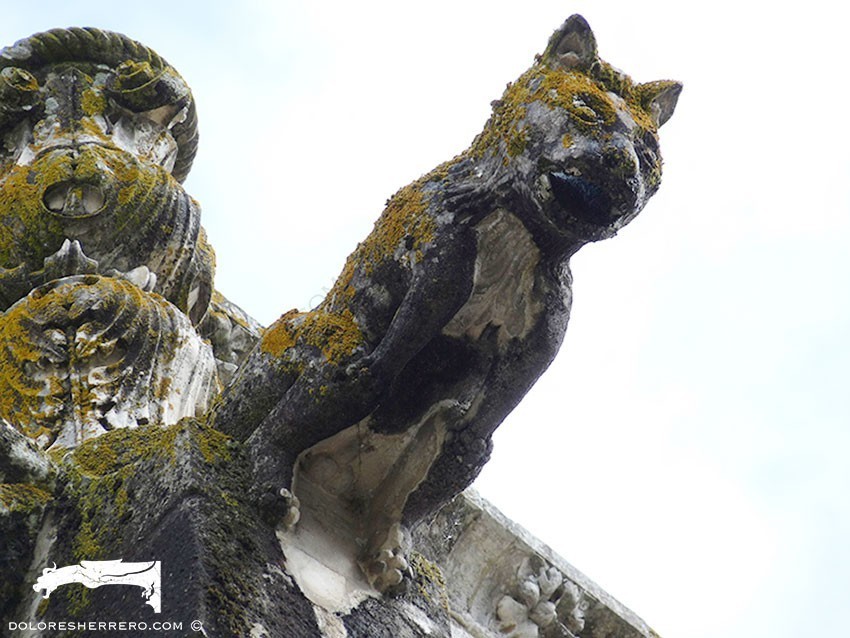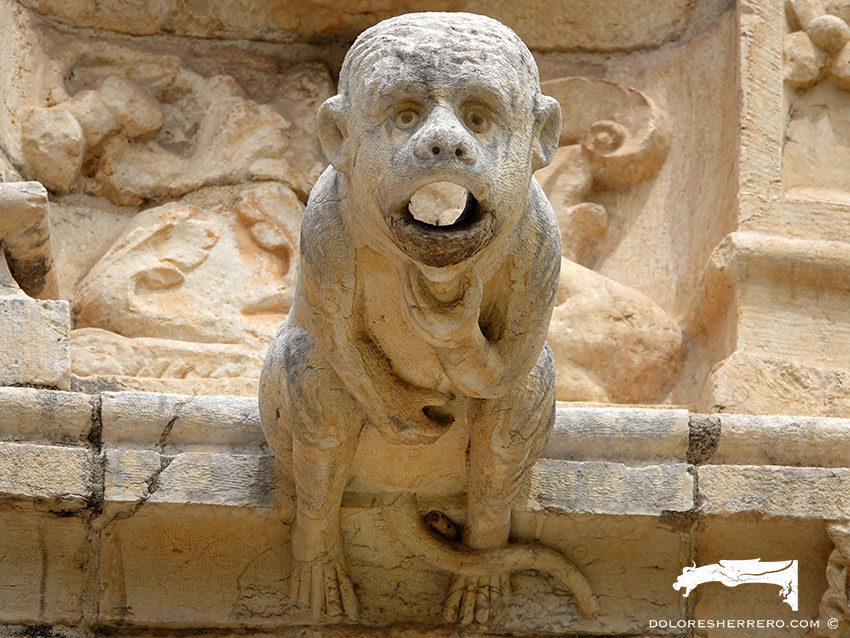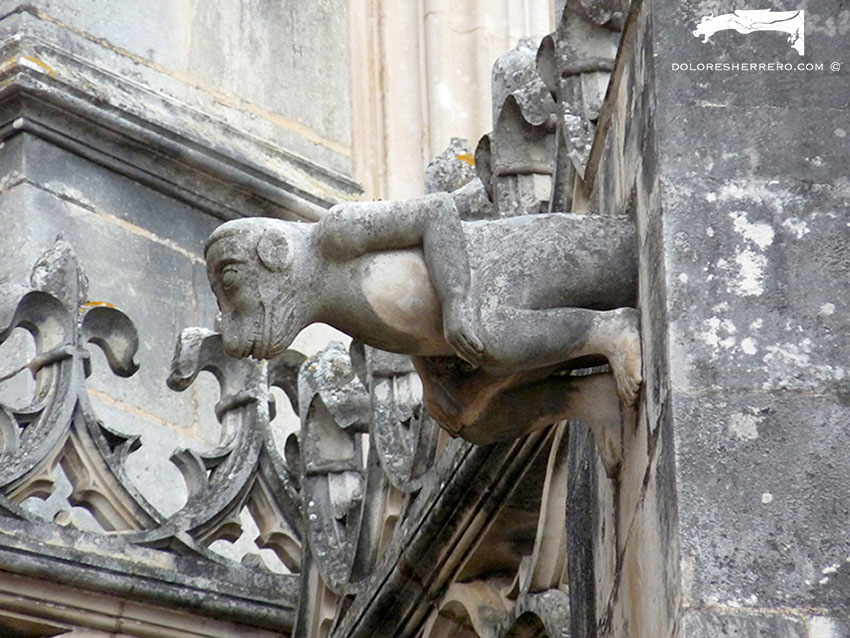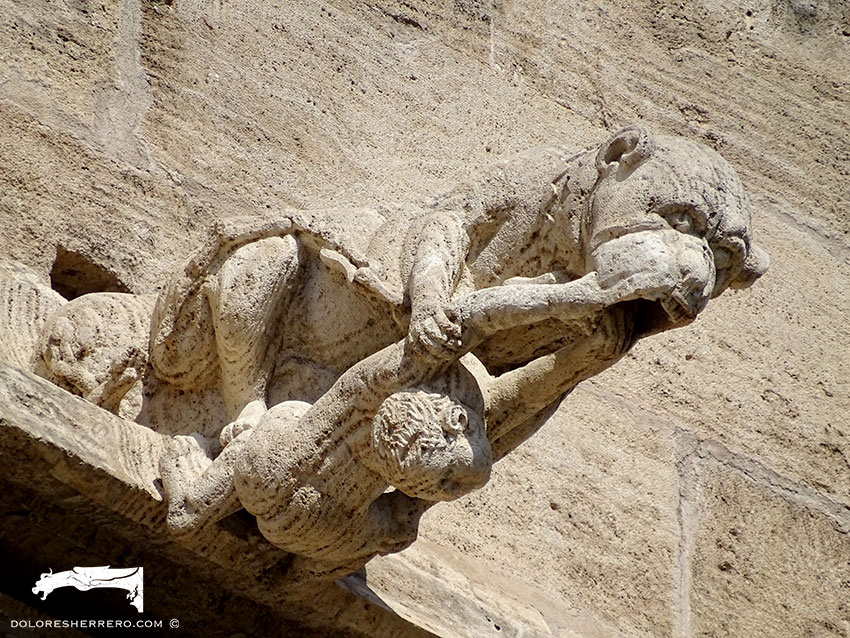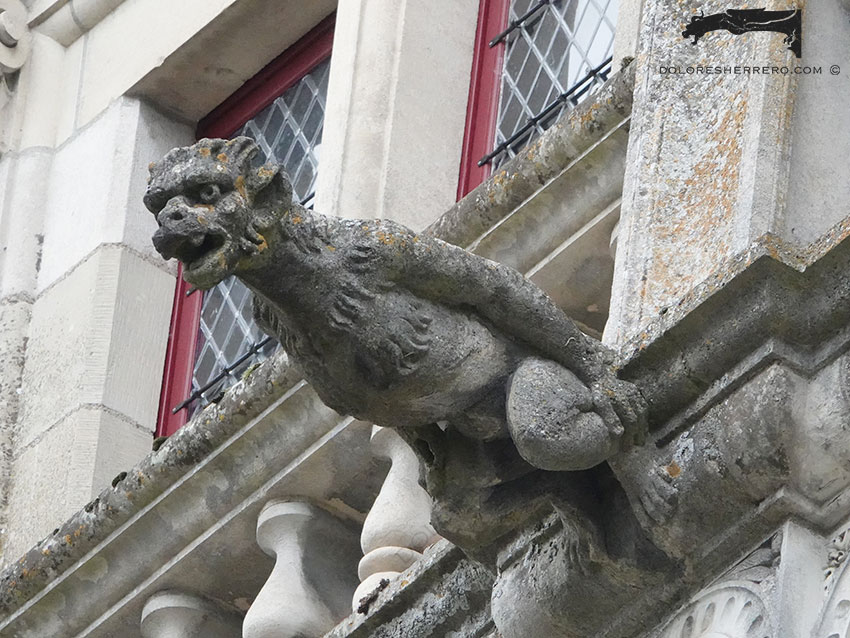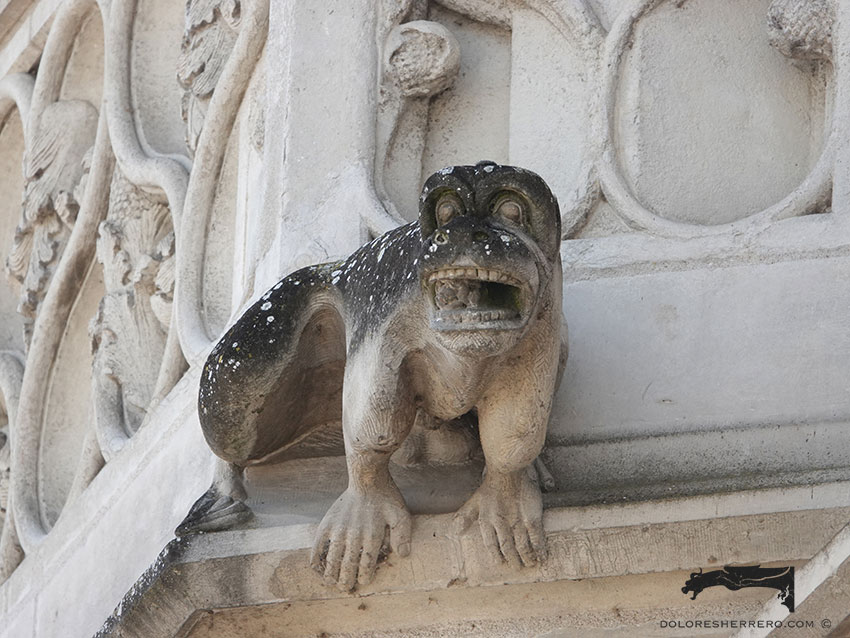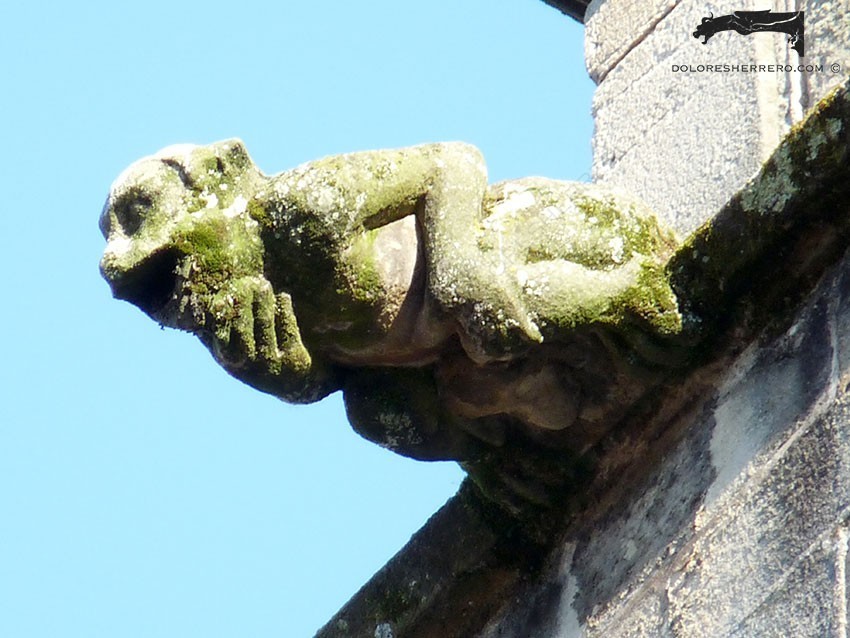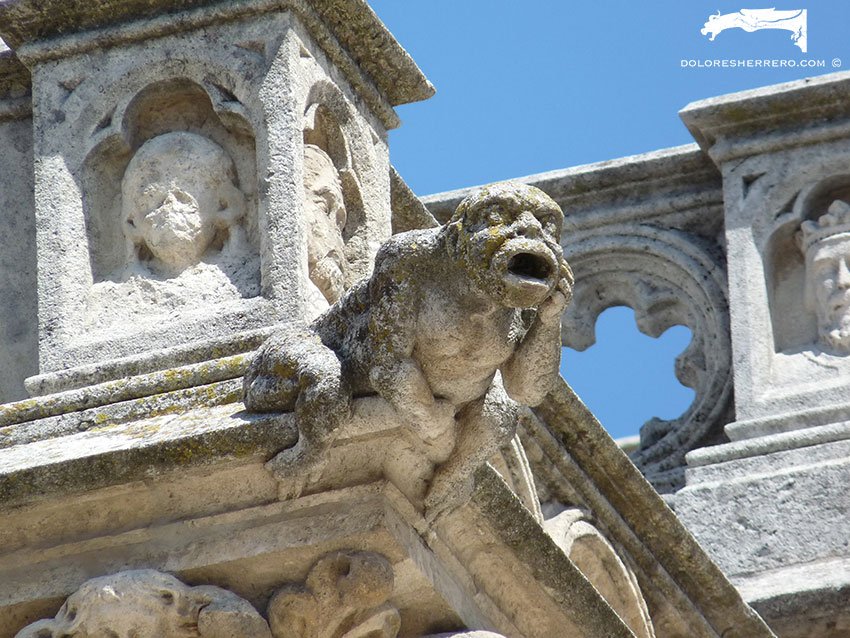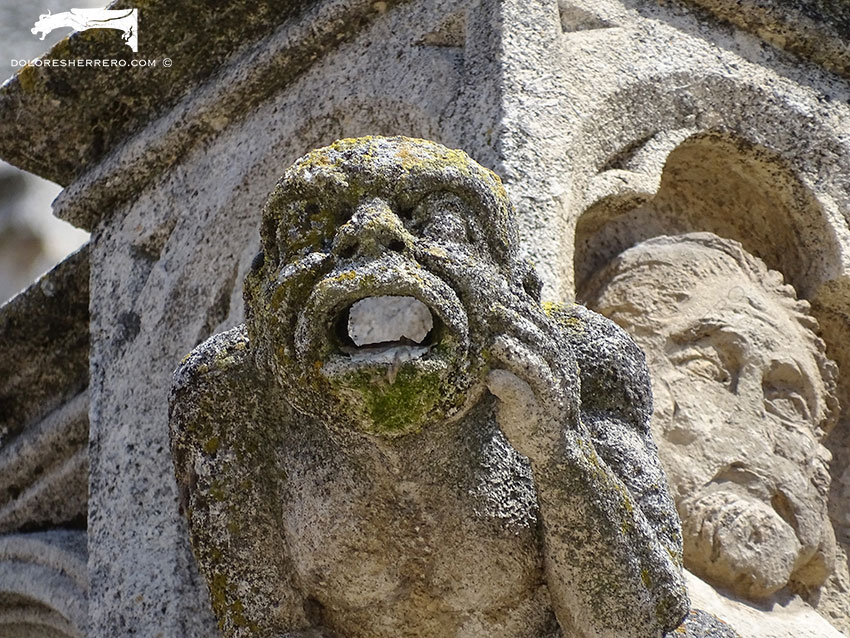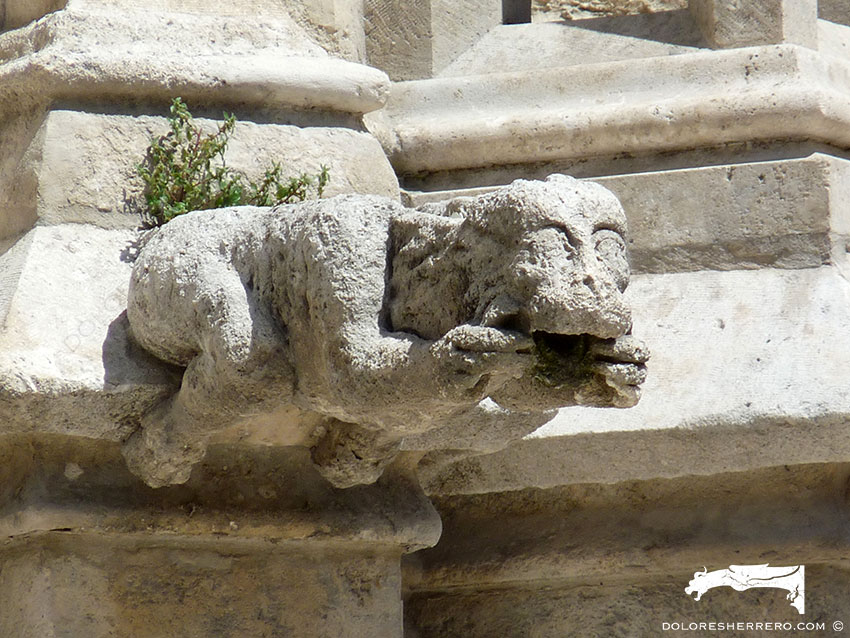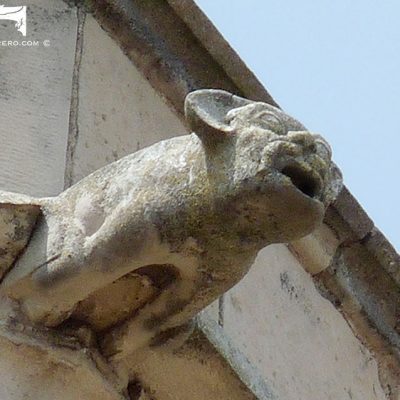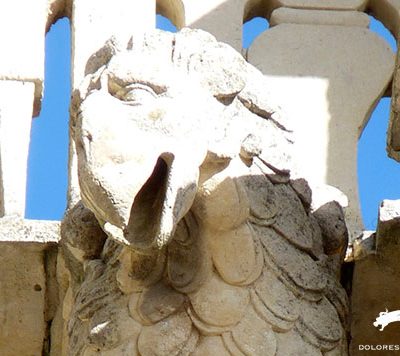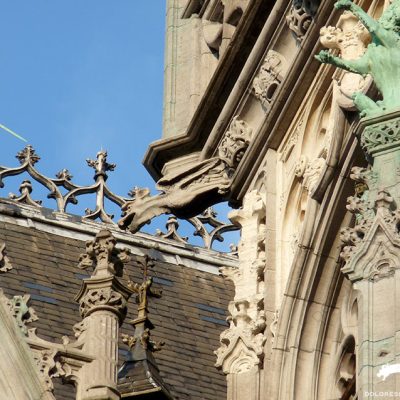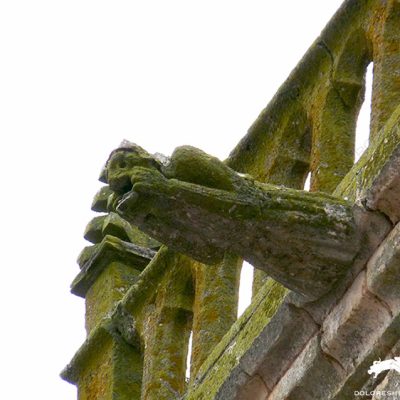To continue with the post on unusual animals that appear in images of gargoyles, we invite you to discover some more animals that are every bit as surprising and peculiar as the first one we are showing you today: the seahorse.
Seahorse
In the Greek and Roman world, the seahorse was an emblem of the marine element and was considered to be a guardian spirit, healer and guide for the dead. Both the seahorse and the frog are animals connected to water, just like mermaids, who, according to Brunetto Latini (a 13th century philosopher) are “meretrices” (a meretrix was a registered prostitute in ancient Rome), malevolent beings “who dwelt in the water because lechery was made out of moisture”.
- Luxembourg Cathedral
- New Cathedral of Salamanca (Spain)
Pig
The pig represents the demon of sensuality and gluttony. Aristotle (4th century B.C.) says that, after man, pigs and dogs are the animals that copulate the most. Pliny the Elder (1st century) brands them as stupid since most of them are incapable of recognising the voice of their owner.
- Meirás Towers (Sada, A Coruña, Spain)
- Abbey of Saint-Savin-sur-Gartempe (France)
- Monastery of San Martín Pinario in Santiago de Compostela (Spain)
- Alcobaça Monastery (Portugal)
- Royal Hospital (Santiago de Compostela, Spain)
- Palma de Mallorca Cathedral (Spain)
- Mirepoix Cathedral (France)
- Limoges Cathedral (France)
- Guarda Cathedral (Portugal)
- Bayonne Cathedral (France)
Rooster
One of the most interesting symbols is that of the rooster. Throughout the ancient world, it became an emblem for its fierceness and courage when defending its hens and their mothers. In China it was an emblem of the defender of the family. The white rooster in particular was an image of what was good, admirable and of great valour. The rooster was also a symbol of vigilance for its voice: “It is not a song, it is not a shout, but something like a fanfare sound that emerges; depending on the hour, it is a warning sign, it is the voice of the boss or of the attentive father, it is the horn played by the victor to the four winds, very loudly, to announce his victory and his joy…” (Charbonneau-Lassay, 1997).
Like in Antiquity, in China it’s thought that the rooster’s voice has the power to ward off evil spirits. In Christianity, it was linked with the Voice of Christ calling souls to prayer. However, its virile and procreative strength turned it into a symbol of lasciviousness, and in the European Middle Ages it symbolised anger because of the frequent fights between young roosters.
- Monastery of San Martín Pinario in Santiago de Compostela (Spain)
- Jerónimos Monastery (Lisbon, Portugal)
- Jerónimos Monastery (Lisbon, Portugal)
- Batalha Monastery (Portugal)
- Limoges Cathedral (France)
- Casa Consistorial in Torre del Compte (Teruel, Spain)
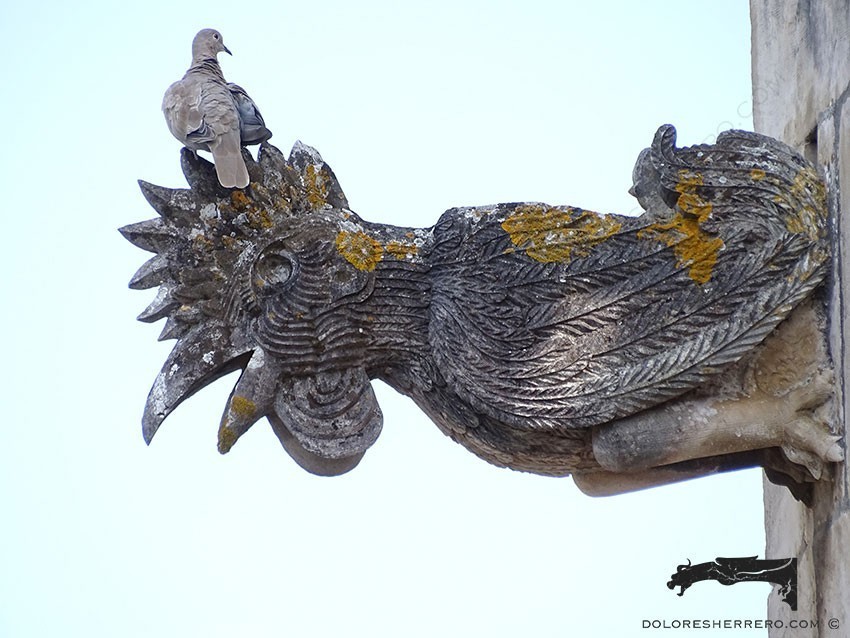
Batalha Monastery (Portugal)
Cat
Now we’re going to talk about one of my favourite animals, the cat. Although it’s a domestic creature, the cat doesn’t like being shut in, so it’s a symbol of freedom. This is why it appears on a number of coats of arms: the ancient Alans, Burgundians and Suebis carried it on their ensigns, showing that, just as cats cannot be forcefully contained, these nations refused to accept servitude. In Aristotle’s time they were regarded as lustful animals. Cats are nocturnal creatures. At night their eyes shine: “It overcomes the darkness of the night with the embers of its eyes” (Thomas de Cantimpré, 13th century). In Egypt, the changes in cats’ pupils to adapt to light evoked the phases of the moon. Nocturnal, with shining eyes and lustful, all attributes that in medieval times unfortunately meant that the cat was regarded as a symbol of the devil and companion of witches, who were often said to adopt the form of a black cat. All this, together with the absurd and awful idea that they bring bad luck, has led to cats being sadly and unfairly treated cruelly and with contempt.
On the other hand, there is a legend called Gatta della Madonna that tells how at the birth of Christ a cat also gave birth to a litter of kittens in the same stable, which resulted in this cat being shown as having the sign of the cross on its back. Although it’s not often depicted in gargoyles, it does appear in other arts, such as in the Canterbury Bestiary (c. 1290-1300), and on a 12th century corbel in Notre Dame de Vouvant (France).
- Jerónimos Monastery (Lisbon, Portugal)
- Batalha Monastery (Portugal)
- Alcobaça Monastery (Portugal)
- Alcobaça Monastery (Portugal)

Ape
Another unusual animal in gargoyle images is the monkey. The figure of the ape has been used to symbolise sin, malice, cunning and lust. It’s also the emblem of man’s lazy soul. The monkey also symbolises the devil, which is sometimes shown in the form of an ape, and when it is depicted in chains it’s connected with the idea of sin conquered by faith and virtue. Apes sometimes appear together with other animals in scenes of the Visitation of the Magi. You can also see it portrayed in other arts, such as in the 14th century Bestiary of El Escorial.
- Jerónimos Monastery (Lisbon, Portugal)
- Alcobaça Monastery (Portugal)
- Batalha Monastery (Portugal)
- Lonja in Valencia (Spain)
- Château Royal in Blois (France)
- Château Royal in Blois (France)
- Mirepoix Cathedral (France)
- Cahors Cathedral (France)
- Burgos Cathedral (Spain)
- Burgos Cathedral (Spain)
- Burgos Cathedral (Spain)
- Blois Cathedral (France)

New City Hall in Munich (Germany)
Animals and Humans: An Enduring Ancestral Bond
For authors like Cirlot (Dictionary of Symbols, 1969), animal symbolism can be linked with totemism and zoolatry. We’re talking about a symbolic need that began with the very earliest tribes, that continues to this day and that “will last while there are humans on the earth”. For Cassirer (Mythical Thought, 1971) the totemic image is an authentic identity, there seems to be no difference between man and beast; a “psychic identity” linking primitive humans and some wild animals.
Throughout history there have been eras in which there was hardly any communication with animals, and this made them seem strange and impenetrable. People projected their fears and anxieties onto them, attributing powers to them, and in many cases this negative symbolism invented by humans has done them terrible harm. Animals do not have negative powers, they are wonderful beings that inhabit the planet, just like humans do. And they’re always with us, our companions in sad and happy times, in history, in art… in short, along life’s journey.
Bibliography
CHARBONNEAU-LASSAY, L., El bestiario de Cristo. El simbolismo animal en la Antigüedad y la Edad Media, vols. I y II, Palma de Mallorca, José J. de Olañeta, Editor, 1997.
El Fisiólogo. Bestiario Medieval, trad.: M. Ayerra Redín y N. Guglielmi, introducción y notas de N. Guglielmi, texto utilizado: Physiologus latinus. Versio Y, editado por F. J. Carmody, University of California, Publications in Classical Philology, vol. 12, nº 7, pp. 95-134, University of California Press, Berkeley and Los Ángeles, 1941, Buenos Aires, Editorial Universitaria de Buenos Aires, 1971.
FERGUSON, G., Signs & symbols in Christian Art, New York, Oxford University Press, 1961.
HASSIG, D., Medieval Bestiaries. Text, Image, Ideology, Cambridge University Press, 1995.
KAPPLER, C., Monstruos, demonios y maravillas a fines de la Edad Media, Madrid, Ediciones Akal, S. A., 1986.
KENAAN-KEDAR, N., Marginal Sculpture in Medieval France. Towards the deciphering of an enigmatic pictorial language, Hants (England) and Vermont (USA), Scolar Press and Ashgate Publishing Company, 1995.
MALAXECHEVERRÍA, I., Bestiario medieval, edición y traducción del inglés de I. Malaxecheverría, Madrid, Ediciones Siruela, S. A., 2008.
MARIÑO FERRO, X. R., El simbolismo animal. Creencias y significados en la cultura occidental, Madrid, Ediciones Encuentro, 1996.

Doctor of Art History and researcher specializing in the study of gargoyles.
I am Dolores Herrero Ferrio, and my thesis, “An Approach to the Study of Gargoyles of Gothic Cathedrals in Castilla and León”, is dedicated to the study of these fascinating figures.
If you like gargoyles and art history, you will also enjoy my book, “The Gargoyle and Its Iconography,” a book I have written with great care for those interested in the world of gargoyles.
I have created my own Encyclopedia of Gargoyles, a Gargopedia to share with you, where you will discover all the secrets and wonders of these enigmatic sculptures.
I hope you enjoy this Gargopedia as much as I have enjoyed creating it, and remember that each gargoyle has a story to tell, and here you will discover them all.

